The Week After Update
To recap:
One week ago, blue jays were pouring in the hundreds of thousands, in a frenzied rush to warmer environments. Today, you can barely count them to a hundred. It seems their fall migration in Ontario is finally coming to an end.
Unfortunately, today’s winds are not favourable for bird movement. Fall migration is greatly influenced by the wind direction. When observed from the Lake Erie shores, northerly winds are most appropriate. This morning, however, south eastern winds are pushing the undergoing fall migration far north of the Hawk Tower, thus making close-up photography more challenging. Throughout the day, even with 1200mm of telephoto reach, most of migratory birds are just specks on the blue sky.
All observations and photographs are made during the second week of October at the Holiday Beach Conservation Area, from the Hawk Tower and surrounding areas. Beside the blue jays, additional birds were captured on camera. These are:
• Osprey
• Northern Harrier
• Great Blue Heron
• Turkey Vultures (lots of them)
Tardy Blue Jays
After the deluge of blue jays experienced last week, I wasn’t expecting too many of them. My return here was rather to observe raptors – as their migration is now slowing down, too. And to confirm my expectations, very few blue jays are seen migrating. During the 6 hours spent in the Hawk Tower, I’ve counted 4 groups, each group consisting of 10 to 30 individuals. The folks from the HBMO may have a more precise count for the day.
I also noted, in contrast to last week, the blue jays are stopping to rest in the nearby trees in larger numbers and for longer periods of time. This behaviour may be encouraged due to additional energy consumption as the birds battle the unhelpful winds.
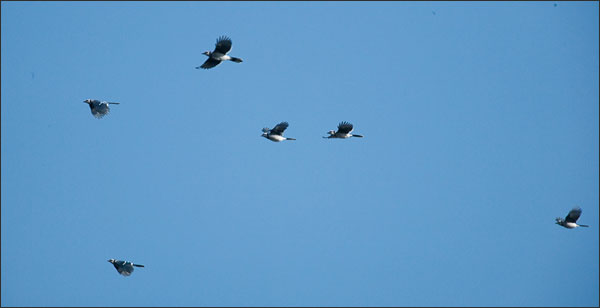
Blue jays late in fall migration
The Resident Osprey
Remember our master fisher’man’ from last week? Our unfailing Osprey is still perching in the same tree – on the same branch – and continues its successful hunting trend throughout the day.
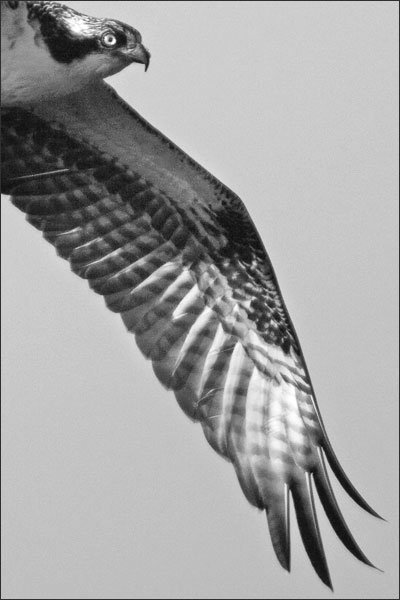
Osprey passing at camera level and showcasing its beautiful wing
Lots of other birds were observed, including: great blue heron, northern harrier, bald eagle, great white egrets, turkey vultures, red-winged blackbirds, mallards, and geese. The majority of the raptors however, my most important subject matter for this assignment, were spotted far north of the Hawk Tower. Too far away for decent close-ups. As a result, we display just two of the species observed: the Northern Harrier and the Turkey Vulture.
The Norther Harrier
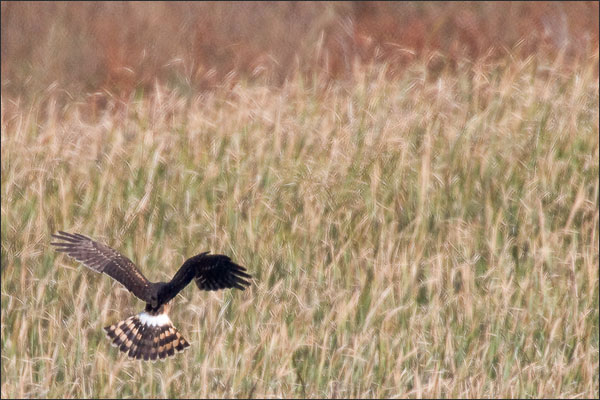
The Northern Harrier – adult female, showing its white rump, hunting in the grassland
Turkey Vulture Kettle
Gliding effortlessly in circles and drawing fleeting patterns in the sky, a large number of turkey vultures formed the so-called “kettle” – named after the boiling water patterns that may appear in a kettle.
The photographs below consist of the full-frame images as recorded by the 1Ds Mark II through 1200mm of glass. While both photographs record the same congregation, the first kettle frame counts approximately 130 individuals; the second frame consists of approximately 110 individuals. In both instances, very few were actually left outside of the frame. I would estimate the total member participation in this kettle to 140-145 turkey vultures.
To note the turkey vulture kettle was photographed at an approximate distance of 3 to 4 km from the shooting position.
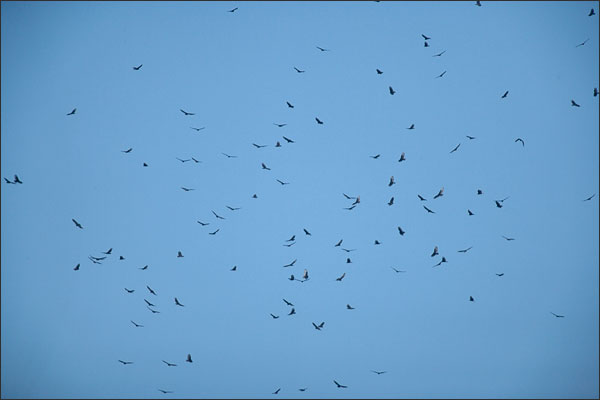
Turkey vulture kettle at Holiday Beach Conservation Area
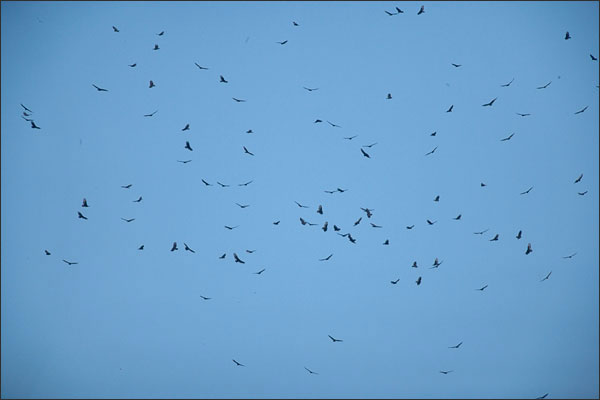
A different “boiling kettle” pattern formed by the turkey vulture congregation at Holiday Beach Conservation Area